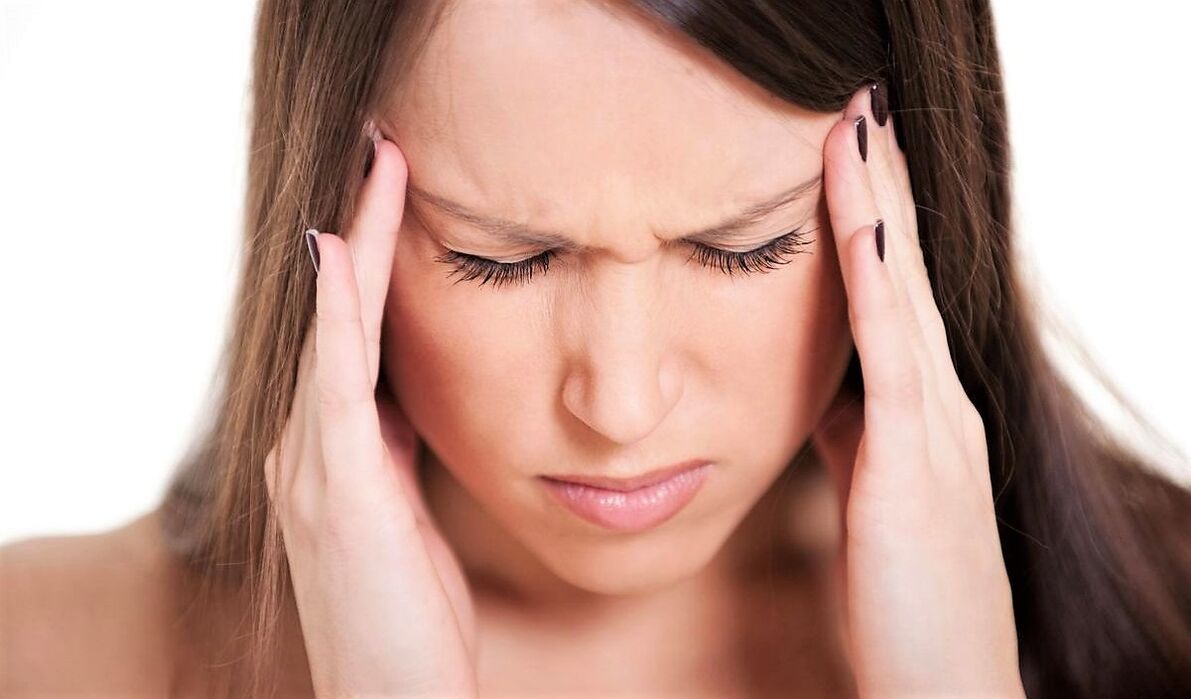
The first signs of cervical osteochondrosis usually appear at a young age. Well, tell me, who hasn't had a pain in the neck at least once in their life? And we didn't pay attention to this symptom, but we found logical explanations: maybe it's spoiled, I didn't sleep well on the pillow, I spent the whole day on the computer and many others. And since we know the reason that affected the vertebrae, there is no need to show the doctor - after all, he will pass by himself. Most often, people after the age of forty turn to a doctor for help with osteochondrosis of the cervical spine, and then due to the presence of concomitant pathologies.
listen to your body
The first signs of cervical osteochondrosis are the occurrence of pain in this part of the spine. Its character can be constant sore and sharp shooting when turning the head, when the vertebra moves relative to the other along the axis.
If a person ignores the emerging syndrome in osteochondrosis of the spine for a long time, the degeneration process in osteochondrosis of the vertebrae progresses.
A symptom such as restriction of mobility of the vertebrae in the affected section arrives - in this way the body is protected from unpleasant sensations. And then the unpleasant symptoms disappear, and the person thinks that he has gotten rid of the problem, and this is actually an aggravation of osteochondrosis.
The inability to turn the head left and right as much as possible, as before, doesn't even bother many. Meanwhile, the pathology can move to the stage of irreversible changes in the tissues that make up the vertebrae. With each exacerbation of osteochondrosis, the symptoms return. As a result, a hernia of the spine is formed, which puts pressure on the nerve roots and blood vessels that pass through each vertebra. As a result, there are signs of high blood pressure: dizziness, headache, flashing "flies" before the eyes.

The signs of osteochondrosis of the cervical spine do not present characteristics of this pathology. Therefore, with an exacerbation of osteochondrosis of the vertebrae, it is sometimes difficult to guess why the malaise occurred. There can be severe headaches in the occipital region, sometimes turning into migraine, blood pressure rising in significant numbers. When coughing, turning the head and sneezing, the symptoms are more pronounced. With exacerbation of osteochondrosis of the spine, there may also be lumbago in the arm or chest. If osteochondrosis of the spine is running and the tissues of the vertebrae have changed significantly, impairment of spinal or cerebral circulation may occur.
If the lower segments of the cervical region are affected, symptoms that mimic heart problems may appear. Is it possible to independently determine whether it is a heart or not? The peculiarity is that chest pain with osteochondrosis increases with body rotation and does not go away after taking nitroglycerin. Sometimes there can be discomfort in the throat area as a result of osteochondrosis of the spine, but throat problems are extremely rare. It is worth noting that discomfort in the throat can be due to the presence of problems with the thyroid gland. Sometimes throat discomfort can come with an emotional and nervous shock. And of course, the most common cause of sore throat and sore throat is inflammation (ARVI, tonsillitis, pharyngitis and so on).
Are you very scared?
Often times, an increase in blood pressure, vegetative-vascular dystonia (DVV) and cervical osteochondrosis of the spine are best friends.
As a result of compression of spinal vessels, blood pressure rises, which is manifested by headache, impaired vision and coordination. The extreme symptoms of this spinal pathology result in the occurrence of a panic attack - this is an excruciating feeling of fear, anxiety, depression.
How can you tell if you're having an attack? A panic attack usually occurs suddenly and is accompanied by the following symptoms:
- cardiopalmus;
- increase in blood pressure indicators;
- sweating, chills, body tremors;
- dizziness and headache;
- feeling short of breath;
- a fear attack.
Other symptoms of a panic attack include:
- pain and discomfort in the abdomen;
- liquid feces;
- frequent urination;
- may have a sore throat
- limb tremors;
- impaired coordination of movements.

A panic attack usually doesn't last more than half an hour. If the patient first felt all these symptoms of an attack, then there is fear of death, fear of the presence of any incurable pathology. Numerous examinations of organ and system pathology do not reveal, except perhaps the pathology of the vertebrae, to which they may not pay attention, so the person begins to think that his case is serious and unique. However, this condition must be treated properly. The patient must understand that nothing threatens life.
What to do
If you feel discomfort in the cervical spine, panic attacks occur, blood pressure rises, if the symptoms are already worrying and do not go away for a long time, see a doctor! Perhaps you have osteochondrosis of the cervical vertebrae. Especially if the pain in the affected spine is acute, it will be difficult to ignore it. Pathologies themselves do not go away, and many patients tend to think that "everything can go away on its own", but in reality everything is just progressing. Temporary remission turns into another exacerbation of spinal osteochondrosis signs. At an early stage, it is easier to identify and overcome the problem than to deal with the complications!




























